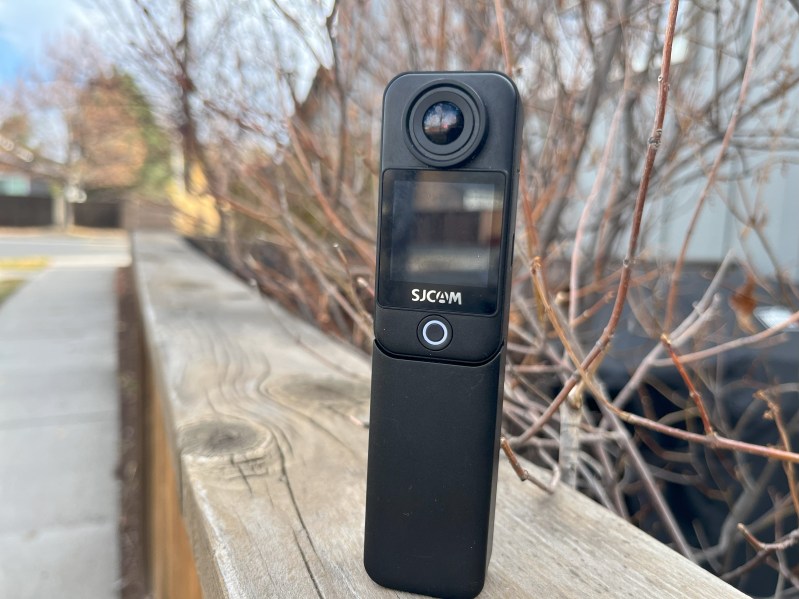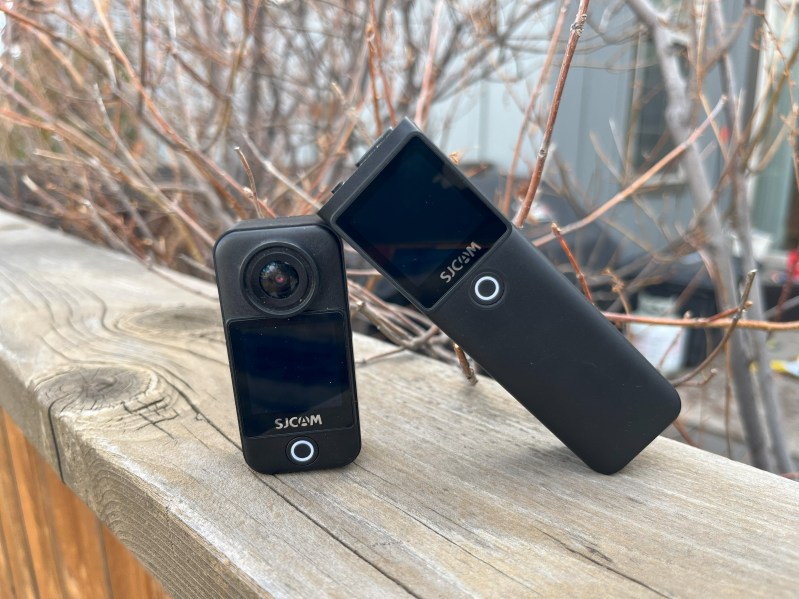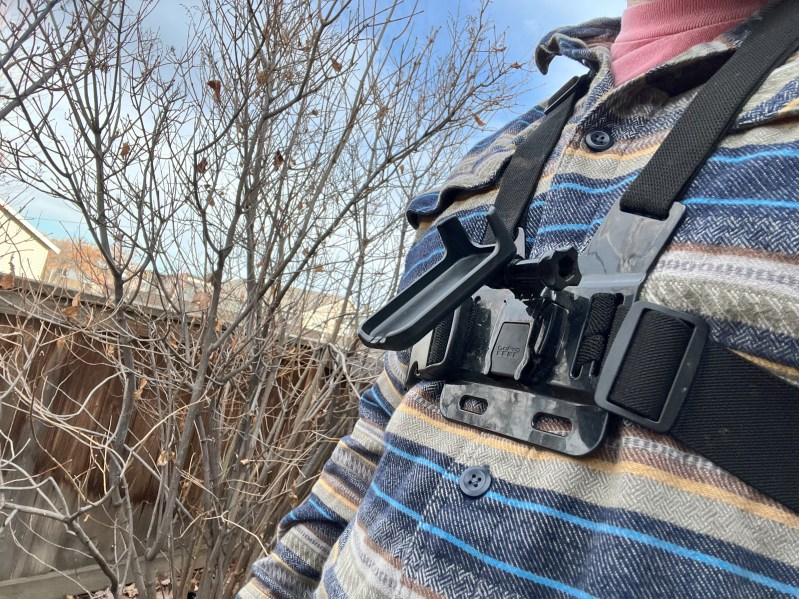
If you have ever gone mountain biking at any bike park, you’ve likely heard the audible “beep” of action cameras like the Insta360 or GoPro turning on before riders head down the trail. An action camera is a great way to capture and share your ride on different platforms.
But, these action cameras typically come at a high price. The POV price of admission is often at least $300. The Insta360 we previously reviewed was around $450.
So, an action camera that is a fraction of the cost can’t do everything an Insta360 or GoPro can do, right? Not according to SJCAM. The camera company brings the price way down but claims to keep performance high with the SJCAM C300.
SJCAM sent The Manual a C300 action camera for us to try. I strapped the C300 on, grabbed my mountain bike, and hit the trails.

The SJCAM C300
Opening the box for this action camera reveals what appears to be two cameras. It is only one action camera but with an extra, longer-lasting additional battery, lens, and screen. Remove the smaller battery from what SJCAM calls the “C300 Pocket,” and the Pocket then attaches to the larger battery.
Along with the camera, the box was full of several attachment and accessory options for the SJCAM. There were several different clip and mount attachments, attachments for helmets or flat surfaces, lanyards, magnets, etc. Some of the attachments the SJCAM C300 came with were more practical for mountain biking than others. Some I didn’t use at all.
Shooting video with SJCAM C300
Let’s get down to the nitty gritty for the SJCAM C300. Video can be shot in 2K and 4K, with a few more lesser-quality resolution options. Photo resolution ranges from 2MP up to 20MP. It offers an 8-times digital zoom and 154° field of view. While this is less than the 360° of the Insta360, let’s remember that the Insta360 cam kept falling over because it was top-heavy, so I couldn’t even use that feature.
The C300 offered different video modes, such as time-lapse and slow motion. While I played with those features a bit, I was more interested in how it shot POV footage. The video footage is stabilized by SJCAM’s “6-axis gyroscope” and displayed on a touch screen a hair bigger than one inch.
Like the Insta360, the SJCAM C300 has a mobile app to access the action camera. Among the app’s features is the ability to view, edit, and download photos and videos. Downloaded photos and videos can then be found in your phone’s media application.

What I liked about the SJCAM C300
If I am being completely honest, nothing about how the SJCAM C300 took video or photos, or the quality of that media, changed my life. The Insta360 took higher-quality photos and videos.
That doesn’t mean that the image and video quality of the C300 was bad, especially when it was stationary. I felt that the apparent 4K imagery was adequate. It didn’t blow me away, but I thought it got the job done.
One thing I liked about the SJCAM C300 was that the camera doesn’t directly mount to any of the provided attachments. The Insta360 and GoPro directly mount to attachments you can then mount to a helmet or a chest mount. This means finding the correct camera angle every time.
The C300 has attachments that it simply clicks into. This meant I could leave the same attachment on my chest mount, keeping the camera angle consistent from ride to ride.
Another cool feature was the SJCAM C300 came with a remote controller. This controller could be paired to the C300 to control it from a distance.
The greatest thing about the SJCAM C300 has to be the price. $139 gets you filming with the C300 pocket. Add $20 more, and you can get the additional battery.
What I didn’t like about the SJCAM C300
You can get three SJCAM C300s for the price of one Insta360. Those are significant savings, but does that mean it is the same quality as the Insta360? Will you be better off buying a more expensive action camera in the long run?
My short answer: It depends.
I first noticed how cheap the plastic felt on the C300. Compared to a GoPro or the Insta360, it was a drastic difference. I had no durability issues, but dropping and breaking this camera was a concern. There’s a lot to be said for first impressions.
The C300’s POV footage was nowhere near as good as the Insta360. The C300’s frame of reference was too far zoomed in. I could occasionally see the stem, parts of my handlebars, and the front wheel. This made it increasingly difficult to judge the size of any trail feature in the footage. In playing the video back, I could barely tell when I was jumping the bike.
Perhaps I was zoomed in and just couldn’t figure out how to zoom out. That may be true due to the camera’s small and often unresponsive touch screen.
SJCAM’s “6-axis gyroscope” did a decent job stabilizing footage, though it seemed there would be a point where stabilization didn’t work anymore. While I had some unstable video with the Insta360, that was due to the camera’s weight, not the technology.
I am a mountain biker, not a tech expert. I’m not sure I could spot the difference between 4K and 5K with the naked eye. What I can spot, however, is video quality that makes you question the 4K claim. This was my experience with the C300. The video seemed a bit grainy, which could be a result of the zoomed-in capturing.
If you want a capable action cam and don’t want to drop the money for an Insta360 or GoPro, the SJCAM C300 is capable. It’s just not equitable to the more expensive options, which becomes evident when you review your footage.
I’ve said it before: Buy once, cry once.




